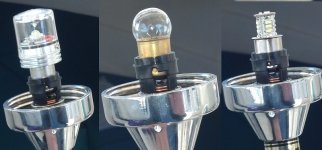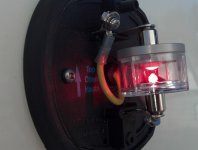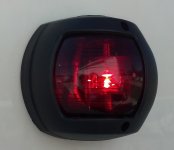A few days ago I installed some Doctor LED bulbs in my navigation lights. The GE90 Star bulb was too tall for my Perko 1209 all around light. The lens wouldn't screw down all the way so I tried the Marinebeam TW-GE-15. The Marinebeam bulb fit fine.

The actual light portion of the Doctor LED bulb ends up near the very top of the lens rather than centered like the standard bulb and the Marinebeam bulb.

With the standard bulb and the Marinebeam bulb the actual light elements are visible through the center of the lens. With the Doctor LED bulb all that is visible is the large base of the bulb. I don't know if this would reduce light output or not. Also, the height of the bulb kept the lens from screwing down all the way into the base. Notice the gap at the base in the photo.
The Doctor LED red and green lights did fit the Perko fixtures.

As far as light output, the standard bulb and the Marinebeam bulb seemed about the same but the Marinebeam bulb was a much whiter light than the standard bulb.
The red and green side lights seemed about the same brightness.

I was surprised at the volume of water that I found in the green light. I'll have to keep an eye on that.

The actual light portion of the Doctor LED bulb ends up near the very top of the lens rather than centered like the standard bulb and the Marinebeam bulb.

With the standard bulb and the Marinebeam bulb the actual light elements are visible through the center of the lens. With the Doctor LED bulb all that is visible is the large base of the bulb. I don't know if this would reduce light output or not. Also, the height of the bulb kept the lens from screwing down all the way into the base. Notice the gap at the base in the photo.
The Doctor LED red and green lights did fit the Perko fixtures.

As far as light output, the standard bulb and the Marinebeam bulb seemed about the same but the Marinebeam bulb was a much whiter light than the standard bulb.
The red and green side lights seemed about the same brightness.

I was surprised at the volume of water that I found in the green light. I'll have to keep an eye on that.
